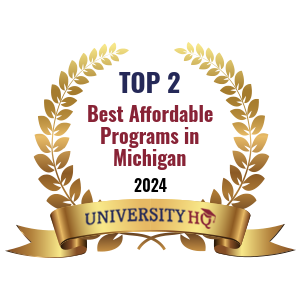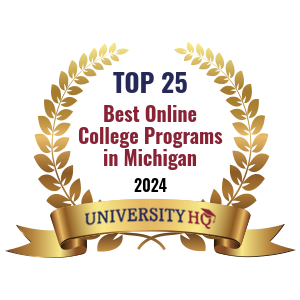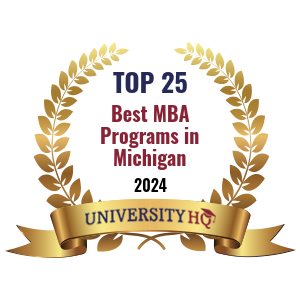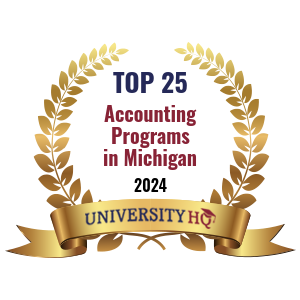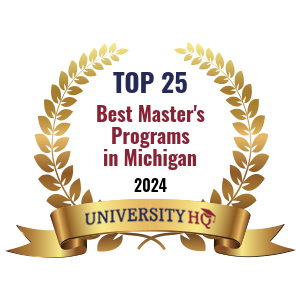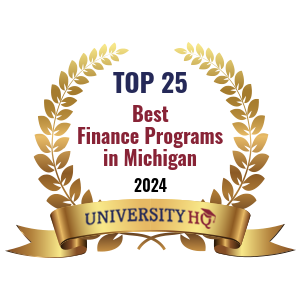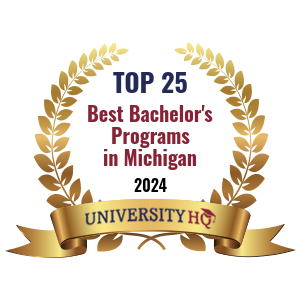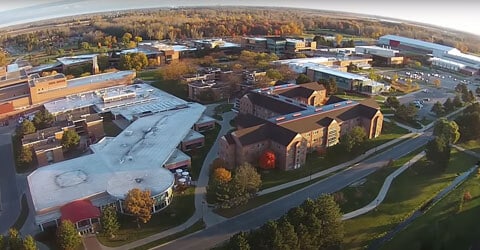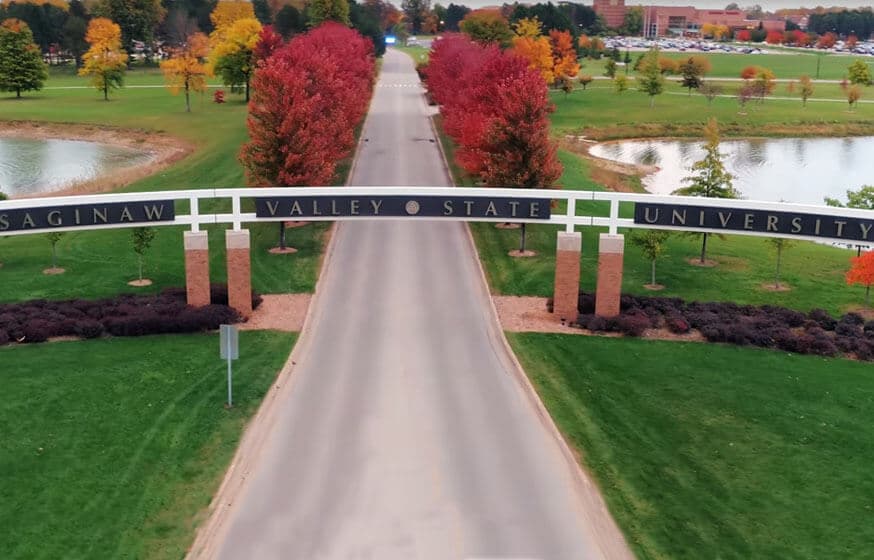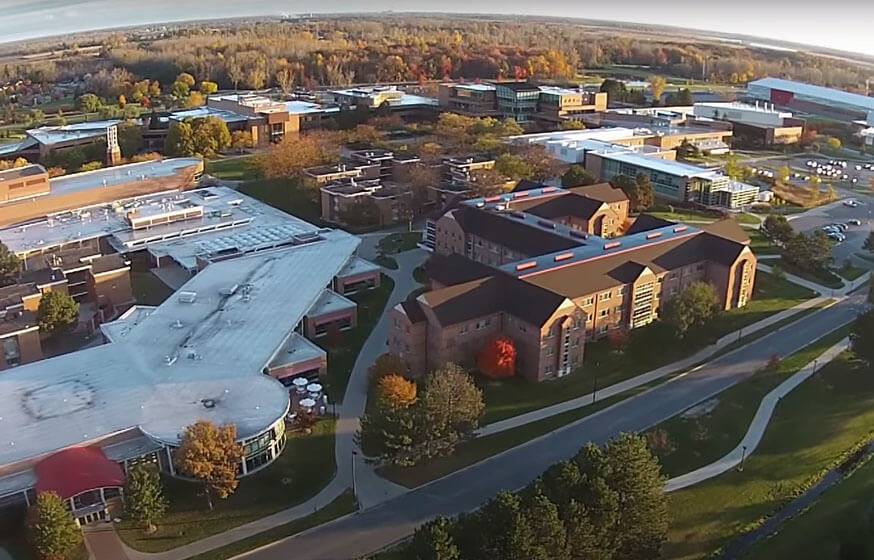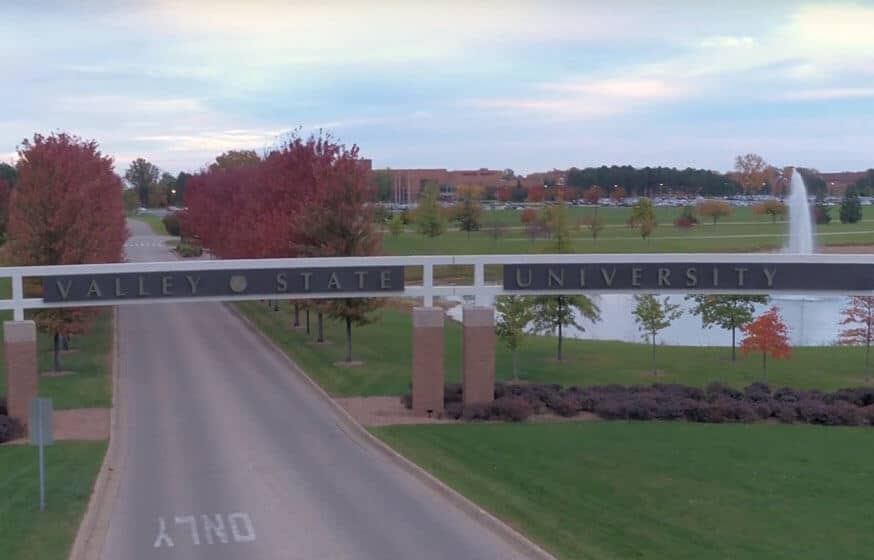Get Matched With Online Colleges
If you choose to attend Saginaw Valley, you’ll have chosen a small, public university in University Center, Michigan. You will have the opportunity to live in campus housing, and most students opt for this for at least the first two years they attend - doing so allows you to take more of an active part in campus activities, which can help you to adjust to living on your own more easily.
Search All Programs
Overview of Saginaw Valley State University
If you decide to visit the campus, you’ll notice that it’s compact, making it easier for you to find classrooms, the bookstore, the library, and a few takeout restaurants nearby. The entire campus is bordered by University Drive, College Drive and Collings Drive. Knowing these roads will help you stay oriented until you are more familiar with the university and University Center, the suburb in which Saginaw Valley State University is located.
The student population includes just over 8,200 students, making this a medium size school. And the student-to-faculty ratio is a little higher at 17 to 1, which isn’t bad. Saginaw State awards degrees ranging from bachelor’s and master’s to doctoral degrees (professional practice). It also awards postbaccalaureate and post-master’s certificates. You may also be able to earn additional credit if you passed Advanced Placement exams or enrolled in a dual credit program.
General Information
| School Type | Public |
|---|---|
| Campus Setting | Suburb: Midsize |
| Campus Housing | Yes |
| Student Faculty Ratio | 17:1 |
| Graduation Rate | 44% |
| Year Founded | 1963 |
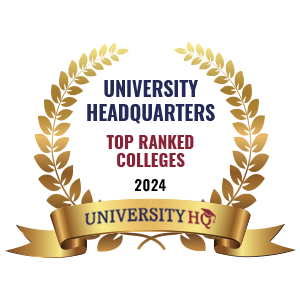
Student Enrollment
Total Students8,251
7,476
775
Undergraduate Student
Male 2,841
Female 4,635
Graduate Student
Male 295
Female 481
Explore Map
Top Rankings For Saginaw Valley State University
Admissions
APPLICATIONS7,149
ACCEPTANCE5,219
Acceptance Rate73%
Enrollment 1,461
| Admissions | |
|---|---|
| Application Fee | $30 |
| High School GPA | Required |
| High School Rank | Recommended |
| High School Transcripts | Required |
| College Prep Courses | Recommended |
| Recommendations | NA |
| SAT/ACT | Required |
| TOEFL (Test of English as a Foreign Language) | Required |
| Application Deadline | July 1 |
| Common Application Accepted | No |
Tuition Cost & Financial Aid
There are plenty of places where you can find estimates for the total cost of any college or university you hope to attend. At Saginaw Valley State University, this total cost is $23,473. This includes in- or out-of-state tuition, books, supplies, room and board, and other charges.
If you applied for financial aid and are eligible, your grants, scholarships, or loans will be able to cover a portion of this cost. What is left after this is applied is the ’average net price’ which, in a recent school year, was $14,271. However, what you end up paying depends strongly on your family’s annual income, because that is how eligibility is decided for most student financial aids. In a recent academic year, families earning between $30,001 and $48,000 paid around $11,734, while families earning between $75,001 and $100,000 paid around $16,241.
Almost 100% of freshman students at SVSU received financial aid in recent years. About 98% received grants or scholarships averaging $7,022 and 95% received an average of $5,379 in institutional grants or scholarships.
| Average net price | 2018-2019 |
|---|---|
| Net Price | $14,271 |
| Average Total Aid | $7,022 |
| Students Receiving Financial Aid | 98% |
| Room & Board | $10,411 |
Sticker Price
- Tuition In-State - $10,814
- Tuition Out-of-State - $25,401
- Books and Supplies - $1,059
- Room & Board - $10,411
- Other - $1,189
Academics
Especially if you are still be considering the majors you’re interested in, it’s nice to know what the majority of students are choosing. At Saginaw Valley State University, the most popular programs are health professions and related programs; business, management, marketing and related support services; public administration and social service professions; parks, recreation, leisure and fitness studies; and engineering.
The retention rate at SVSU is 74%, which is quite good. This statistic keeps track of the percentage of first-year students who return here for their second year of school. The 4-year graduation rate on the other hand is quite low at 15% but the 6-year graduation rate is more than double that and close to the average at 44%.
What can you do if you find an unexpected time conflict between one or more of your classes and something like a part-time job? If you can’t change the time of your working hours or whatever other responsibility you have, something else has to change. This doesn’t necessarily mean that you’ll have to drop the classes, especially if they are required for graduation. Instead, you may be able to talk to you advisor and switch to an evening class or an online section. These won’t be available for anyone, but any additional flexibility is always welcome.
Retention
Rate
4 year
Graduation
Rate
6 year
Graduation
Rate
Student Population Total
Student Population 8,251
7,476
775
Most Popular Programs & Majors
(# of Diplomas Awarded by Subject)
| Health Professions and Related Programs | 337 Total Graduates / 24% |
|---|---|
| Registered Nursing/Registered Nurse | 207 Graduates |
| Health/Medical Preparatory Programs, Other | 64 Graduates |
| Rehabilitation Science | 37 Graduates |
| Athletic Training/Trainer | 15 Graduates |
| All Business Majors | 253 Total Graduates / 18% |
| Business Administration and Management, General | 100 Graduates |
| Accounting | 43 Graduates |
| Marketing, Other | 42 Graduates |
| Finance, General | 30 Graduates |
| Public Administration and Social Service Professions | 91 Total Graduates / 6% |
| Social Work | 84 Graduates |
| Public Administration | 7 Graduates |
| Parks, Recreation, Leisure, and Fitness Studies | 83 Total Graduates / 6% |
| Kinesiology and Exercise Science | 83 Graduates |
| All Engineering Majors | 72 Total Graduates / 5% |
| Mechanical Engineering | 54 Graduates |
| Electrical and Electronics Engineering | 18 Graduates |
| All Other Diplomas | 41% |
Outcome & Salary
Whether you walk off stage and into your first job or take a bit longer to find the one that you really want, it’s good to know what to expect after you graduate. While other student’s stories won’t be the same as yours, they can act as a guidepost. Graduate’s from Saginaw Valley State University earn early-career salaries of around $47,900 and, by mid-career, their salaries increase to $80,400.
Now, you should keep the 4-year cost of education in mind ($57,084 on average). This will affect your total income, especially if you paid for much of your school with loans.
Based on the numbers, a graduate’s 10-year salary earning potential is $603,980 and their 20-year earning potential is $1,407,980. If you subtract your 4-year cost of education from both of these numbers, you’ll have your projected return on investment (ROI). The expected 10-year projected ROI is $546,896 and the 20-year projected ROI is $1,350,896.
However, some high school graduates decide to get right into the work force, or perhaps don’t want to add the stress of college debt to their lives. They find jobs instead. While there are outliers that can make good money with a trade education or due to their own brilliance, these workers national average salary is $38,792. After 10 years, their projected total income is $387,920 and, 20 years later, it is $775,840.
| Graduates Salary | |
|---|---|
| College Grads Early Career Salary | $47,900 |
| College Grads Average Salary | $60,398 |
| College Grads Mid Career Salary | $80,400 |
| Return on Investment (ROI) | |
|---|---|
| 10 Year Salary Earnings Potential | $603,980 |
| 20 Year Salary Earnings Potential | $1,407,980 |
| Cost of Education (Net Price) 4 Year | $57,084 |
| 10 Year Projected ROI | $546,896 |
| 20 Year Projected ROI | $1,350,896 |
| No College Education Salary Comparison | |
|---|---|
| National Average Salary | $38,792 |
| 10 Year Projected Income | $387,920 |
| 20 Year Projected Income | $775,840 |
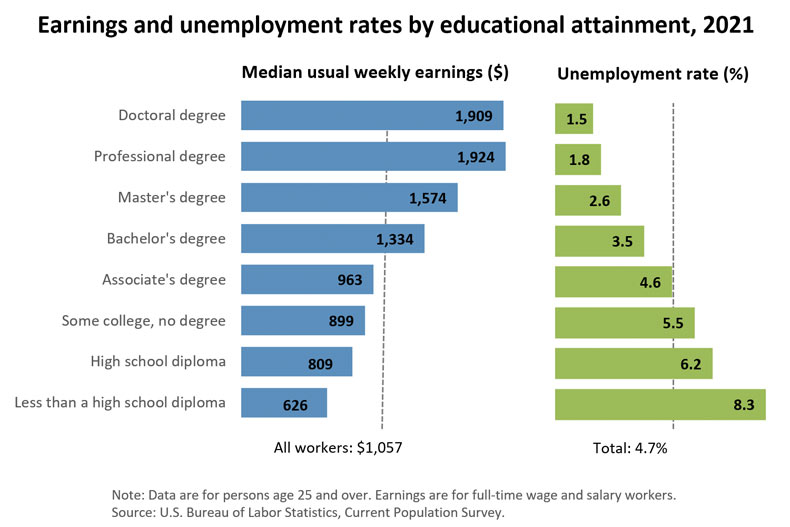
Related Top College Resources

